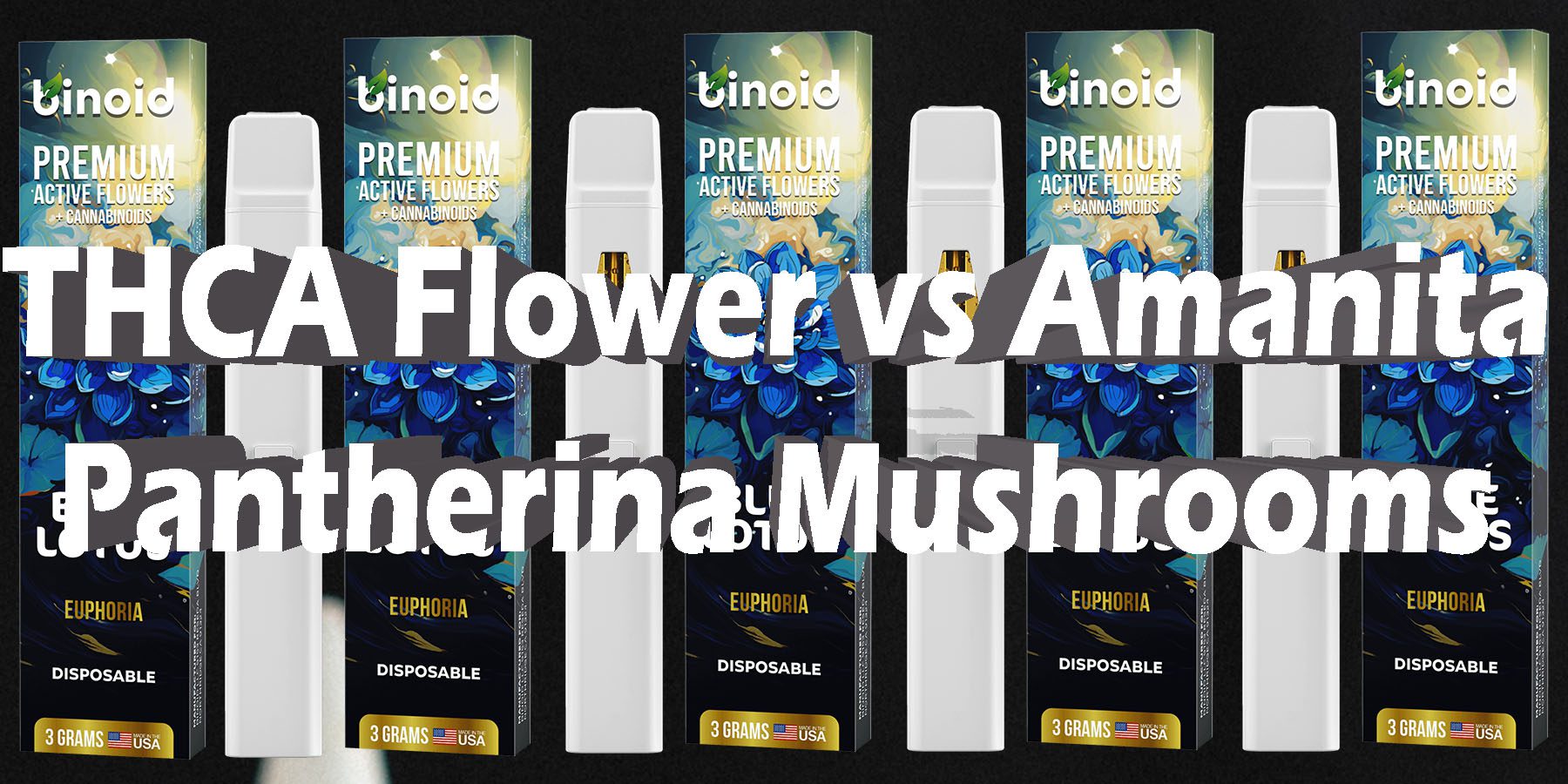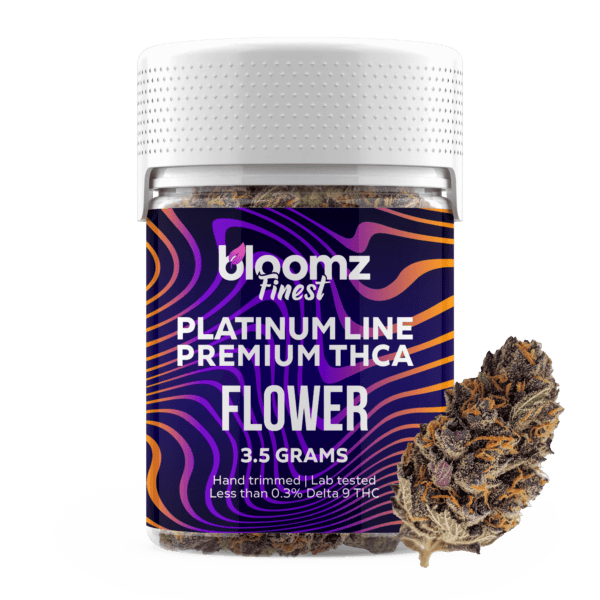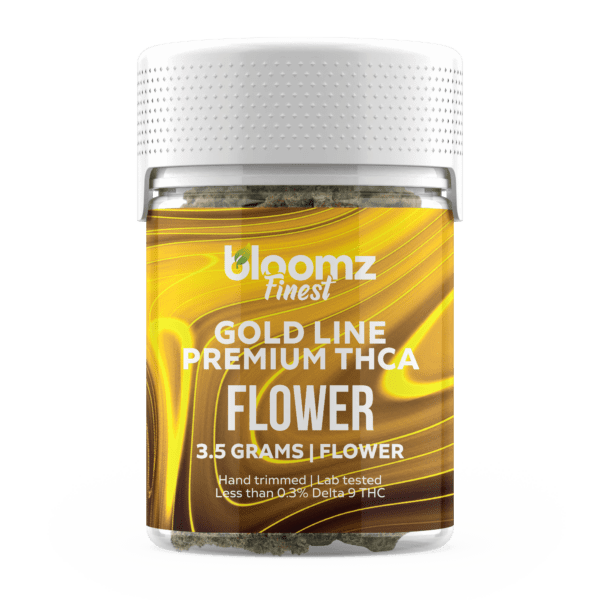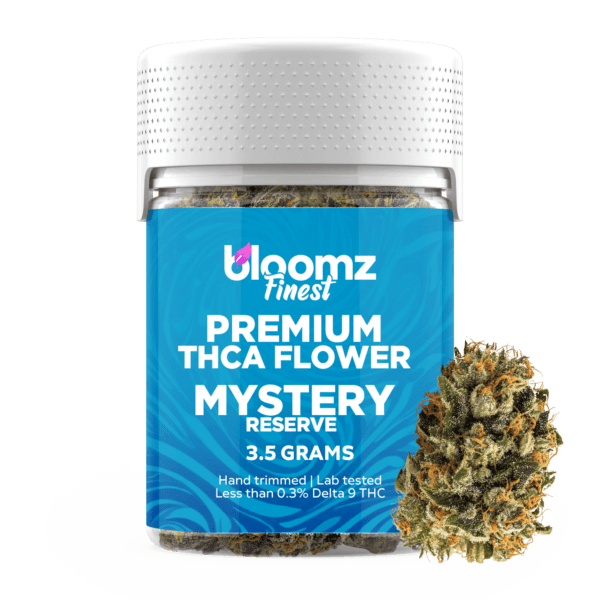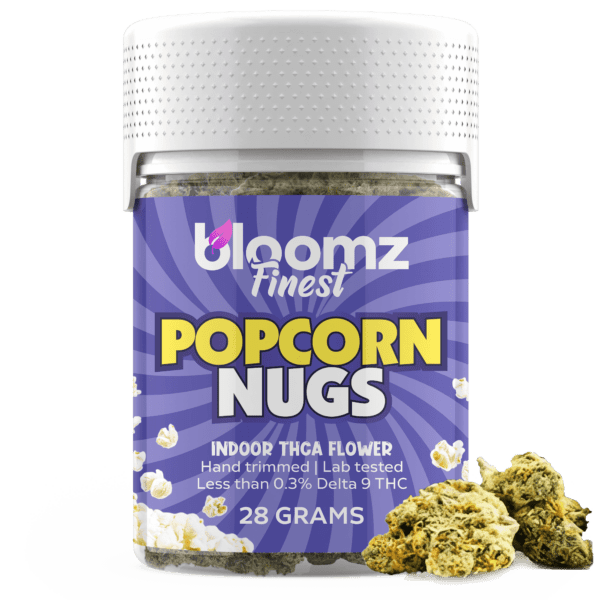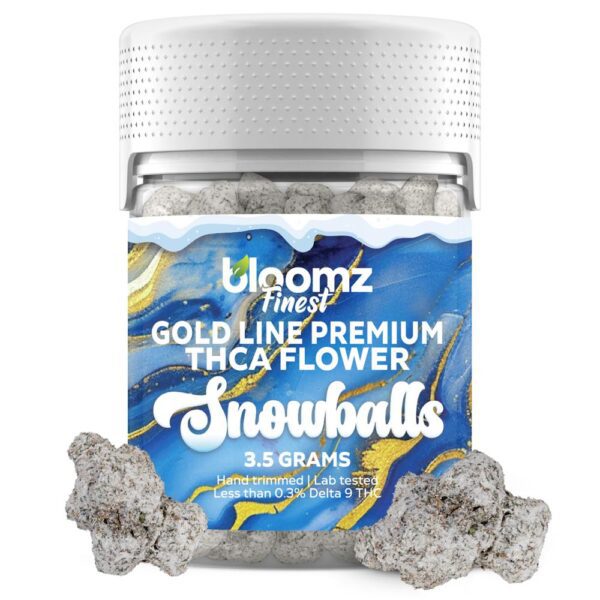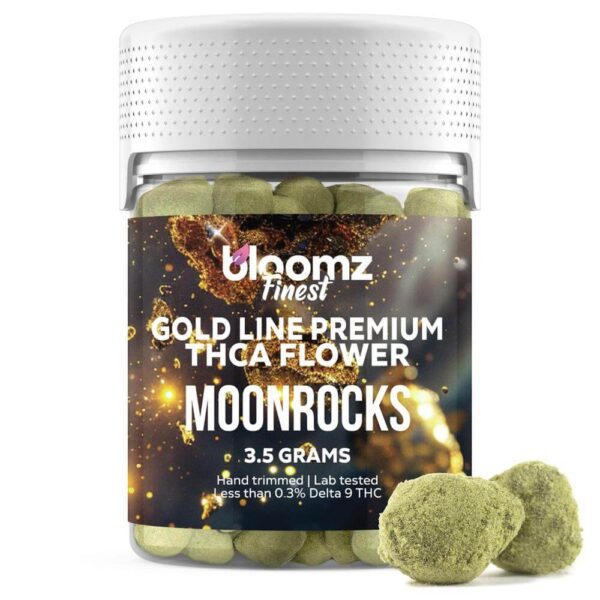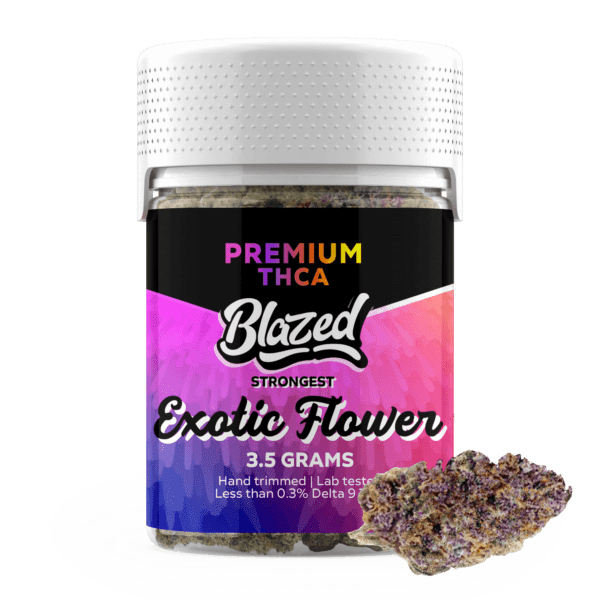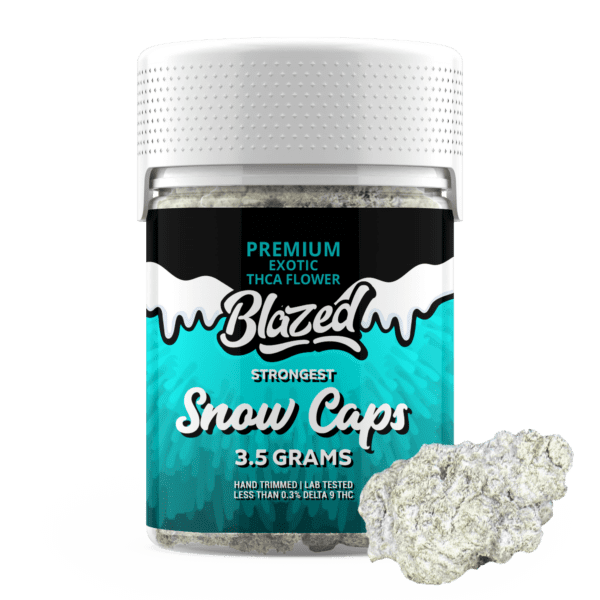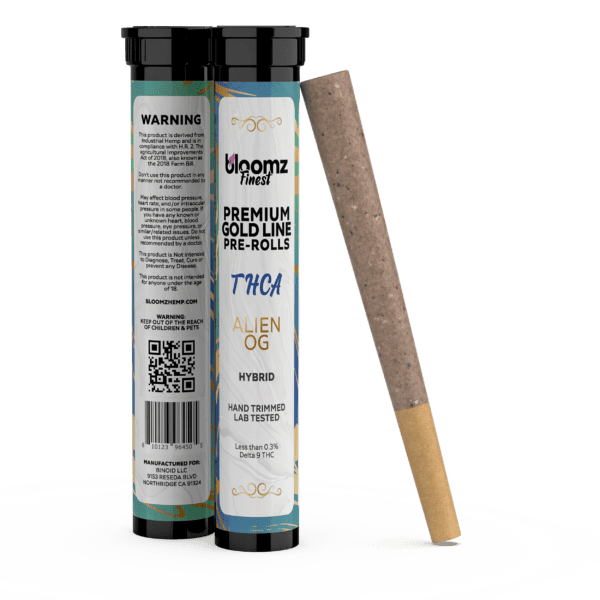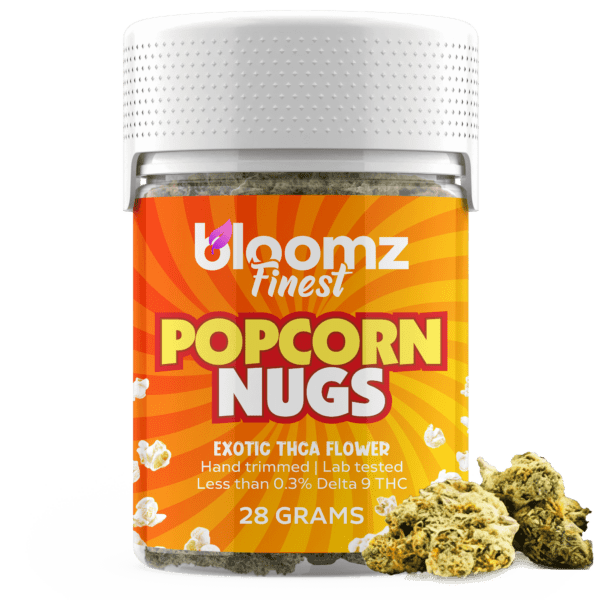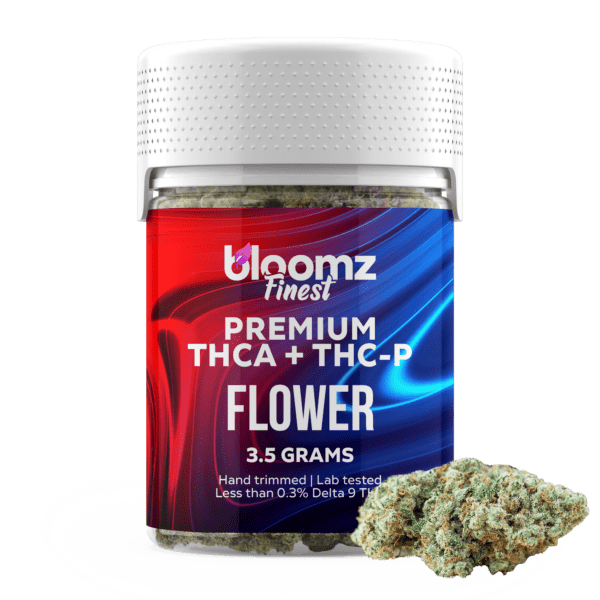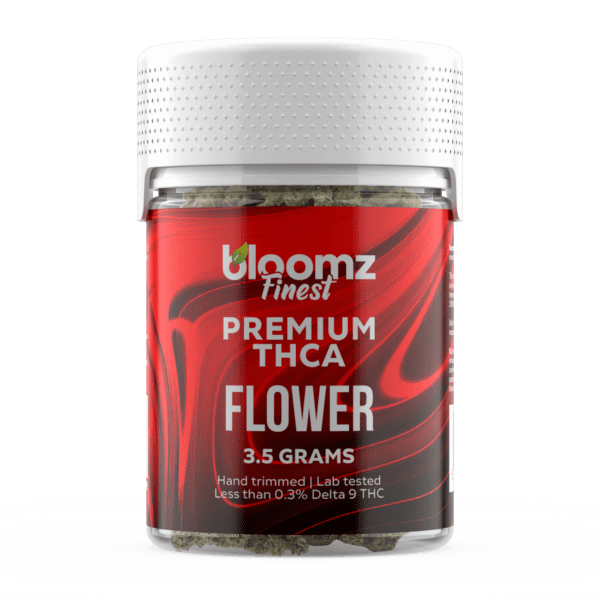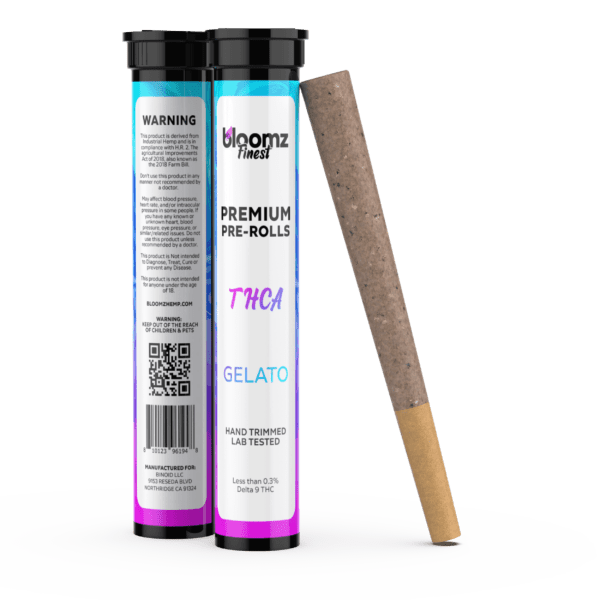In the vast and ever-unfolding catalog of nature’s offerings, there exist certain plants and fungi that command a unique blend of reverence, curiosity, and respect. These aren’t the ordinary flora of a common garden or the simple mushrooms of a culinary dish; they are organisms with complex chemistries and deep-rooted histories that offer profound shifts in perception. Today, the modern seeker of alternative experiences stands at a fascinating crossroads, presented with choices that span the entire spectrum of intensity and origin. In one corner, we have the meticulously cultivated, trichome-laden buds of THCA flower, a product born from the familiar lineage of cannabis, representing the pinnacle of horticultural science.
In the other, emerging from the shaded loam of ancient forests, stands the Amanita Pantherina, the potent and enigmatic cousin of the more famous fly agaric. This comparison is more than a simple juxtaposition; it is a deep dive into two vastly different philosophies of experience. It’s a matchup between the controlled, euphoric sunshine of a highly developed plant and the wild, unpredictable, and profoundly deep dream-state unlocked by a powerful and respected fungus.
To Buy THCA Flower Click Here
Recommended products
-
THCA Flower – Platinum Line
$49.99$79.99 -
THCA Flower – Indoor Exotics – Gold Line
$37.99$69.99 -
THCA Flower – Mystery Reserve
$41.99$79.99 -
THCA Smalls
$149.99$256.99
Why It’s Important to Breakdown the Matchup of THCA Flower vs. Amanita Pantherina Mushrooms
In an age where digital marketplaces provide unprecedented access to the world’s botanical and fungal treasures, the responsibility for informed decision-making falls squarely on the individual. The comparison between THCA flower and Amanita Pantherina mushrooms is not merely an academic exercise; it is an essential guide for navigating two substances that occupy profoundly different positions on the spectrum of psychoactive potential. To group them under a generic “alternative” label would be a disservice to their unique natures and could lead to wildly misaligned expectations.
A thorough breakdown is crucial because it dissects their disparate chemical makeups, legal standings, historical uses, and most importantly, the vastly different conscious states they produce. By illuminating this chasm of difference, we provide a framework for responsible exploration, ensuring that curiosity is paired with a deep and abiding respect for the power inherent in each.
The most critical reason for this detailed analysis lies in the sheer difference in intensity and the nature of the experience. THCA flower, upon heating, delivers the effects of Delta 9 THC, a journey well-mapped by millions, characterized by euphoria, relaxation, and sensory enhancement. It is a path that, while potent, is relatively familiar and predictable. Amanita Pantherina, by contrast, is a leap into a far more esoteric and powerful realm.
Containing significantly higher concentrations of muscimol and ibotenic acid than its more famous relative, Amanita muscaria, the Panther Cap induces a profoundly dissociative and oneiric state that can be overwhelming for the unprepared. Understanding this distinction is paramount; it is the difference between planning for a pleasant evening of heightened senses and preparing for a deep, introspective dive that can border on a trance-like stupor.
Furthermore, this matchup highlights crucial differences in safety, sourcing, and preparation. The legal hemp industry, from which THCA flower emerges, has established protocols for third-party lab testing, providing consumers with a degree of assurance regarding purity and potency. The world of Amanita Pantherina is far more niche and wild, demanding an even greater level of diligence from the consumer. The mushroom’s natural potency variance and the critical need for proper decarboxylation to convert neurotoxic ibotenic acid into muscimol mean that product quality and preparation are not just matters of preference, but of paramount safety. A clear breakdown underscores why sourcing from highly reputable, knowledgeable suppliers is non-negotiable when dealing with such a potent fungus.
Finally, comparing these two contenders allows for a richer appreciation of their distinct places within human history and culture. Cannabis has a long and multifaceted history as a social, spiritual, and recreational plant, and THCA flower is the latest innovation in this long-running story. Amanita Pantherina’s history is more shrouded and specialized, often intertwined with that of its relatives but recognized by mycologists and experienced ethnobotanists for its exceptional strength. It has been a tool for the dedicated shaman or the serious explorer rather than a communal substance. By placing them side-by-side, we can fully grasp their individual characters: one a widely embraced botanical companion, the other a powerful and revered fungal key, reserved for the most deliberate and prepared of journeys.
Contender #1: THCA Flower
Emerging from the ever-evolving world of cannabis cultivation and science, THCA flower has rapidly carved out a significant niche for itself, representing a fascinating intersection of botanical tradition and modern legal frameworks. It stands as a testament to the ingenuity of growers and the intricate chemistry of the cannabis plant, offering an experience that is both timelessly familiar and refreshingly new. To the uninitiated eye, a bud of high-quality THCA flower is indistinguishable from its more restricted marijuana counterpart, boasting the same vibrant colors, complex aromas, and sparkling coat of crystalline trichomes.
This striking similarity is no coincidence; it is the result of meticulous breeding and cultivation practices aimed at maximizing one specific compound while adhering to a strict legal standard. THCA flower is not a synthetic product or a lesser version of a classic; it is a genuine, high-potency cannabis flower that operates within a unique legal space, making it one of the most talked-about and sought-after products in the modern hemp market. Its story is one of chemistry, legal interpretation, and the relentless pursuit of quality by a dedicated community of cultivators.
At its core, the phenomenon of THCA flower revolves around a single molecule: Tetrahydrocannabinolic acid (THCA) – a non-psychoactive acidic precursor to the famous Delta 9 THC. In the living cannabis plant, this is the primary form in which the cannabinoid exists. Think of THCA as Delta 9 THC in a dormant state, possessing a different molecular structure that includes an extra carboxyl ring. This additional ring prevents the molecule from binding effectively with the CB1 receptors in the brain, the interaction responsible for the intoxicating effects associated with cannabis. It is for this reason that consuming raw, unheated cannabis does not produce a significant psychoactive experience. The magic, as it were, lies in a process called “decarboxylation”.
When THCA is exposed to heat—through smoking, vaping, or cooking—it loses that extra carboxyl ring and is converted into the psychoactive Delta 9 THC. This transformation is the entire basis upon which THCA flower’s effects are built, a simple chemical reaction that unlocks the plant’s full potential.
Recommended products
So, what exactly is THCA flower, and how is it produced to walk this fine legal line? THCA flower is cannabis flower, specifically cultivated from strains that are naturally high in THCA but extremely low in Delta 9 THC at the time of harvest. According to the 2018 Farm Bill, hemp is legally defined as a cannabis plant containing no more than 0.3% Delta 9 THC by dry weight. Savvy cultivators have leveraged this definition by breeding strains that produce vast quantities of THCA while keeping the Delta 9 THC levels below the legal threshold. The production process is a delicate art and science, requiring precision at every stage to ensure a high-quality, compliant final product:
Genetic Selection: The process begins with choosing the right genetics. Cultivators select cannabis strains known for their robust trichome production and high THCA potential. These are often iconic, high-potency strains that are carefully bred over generations to express the desired cannabinoid profile, specifically minimizing the natural degradation of THCA into Delta 9 THC while the plant is growing.
Controlled Cultivation: The plants are typically grown in highly controlled indoor or greenhouse environments. This allows growers to manage every variable—light cycles, temperature, humidity, and nutrients—to optimize the plant’s health and maximize trichome development. Stressing the plant in specific ways can encourage resin production, leading to higher concentrations of cannabinoids like THCA.
Precision Harvesting: The timing of the harvest is absolutely critical. Growers must harvest the plants at their peak maturity, just before the natural degradation process or exposure to environmental heat and light could convert a significant amount of THCA into Delta 9 THC, potentially pushing the flower over the legal 0.3% limit.
Careful Curing: After harvesting, the flower is carefully dried and cured. This is a slow process designed to remove moisture while preserving the delicate cannabinoids and terpenes. The curing environment is kept cool and dark to prevent premature decarboxylation and maintain the flower’s legal status, all while enhancing its aroma and flavor.
Compliance Testing: Before hitting the market, reputable brands send samples of their flower to third-party laboratories for comprehensive testing. This analysis confirms the flower’s cannabinoid profile, ensuring it is below the 0.3% Delta 9 THC threshold, and also screens for pesticides, heavy metals, and other contaminants, guaranteeing a safe and compliant product for the consumer.
The market for THCA flower is incredibly diverse, offering a wide spectrum of types and categories to suit every preference and budget. This variety reflects the maturity of the cannabis cultivation industry and the discerning tastes of consumers who look for specific qualities in their flower. From the environment it was grown in to the way it is processed and presented, each category offers a unique set of characteristics. Understanding these distinctions is key to navigating the options and finding the perfect product to match one’s desired experience, whether that’s the pinnacle of aromatic intensity or the simple convenience of a ready-to-use format.
This granular level of choice allows users to tailor their experience with a precision that was once unimaginable in the broader market:
Indoor THCA Flower: Considered the gold standard by many connoisseurs, indoor-grown THCA flower is cultivated in completely controlled environments. This method gives growers god-like control over every aspect of the plant’s life, from the exact spectrum of light it receives to the precise humidity and CO2 levels in the air. The result is typically a visually stunning product with dense, perfectly formed buds, a thick coating of crystalline trichomes, and an intensely pungent aroma. Indoor flower often commands a higher price due to the significant energy and infrastructure costs involved, but for those seeking maximum potency and the most vibrant terpene profiles, it is often considered the pinnacle of quality.
Outdoor THCA Flower: Grown under the natural sun, outdoor THCA flower embodies a more traditional and sustainable approach to cultivation. These plants grow larger and produce buds that can be less dense than their indoor counterparts, but they often possess a unique and complex character influenced by the natural terroir—the soil, climate, and environment in which they were grown. While sometimes less visually perfect, high-quality outdoor flower can offer a rich, full-bodied flavor profile and robust effects. It is also generally more affordable, making it an excellent choice for budget-conscious consumers who appreciate a more rustic, sun-grown product.
THCA Smalls: This category refers not to a specific growing method but to the size of the buds. “Smalls” are smaller, pea-sized or popcorn-sized nuggets of flower that are often separated from the larger, premium colas during the trimming and sorting process. They come from the same high-quality plants as the larger buds and possess the same potency and terpene profile, but are offered at a lower price point due to their less commanding visual appeal. THCA smalls are a fantastic value proposition, providing access to top-shelf genetics without the premium price tag of the top colas.
THCA Nugs: “Nugs” is a colloquial term for the standard, trimmed buds of the cannabis plant. This is the most common form in which THCA flower is sold. These are the well-formed, manicured pieces of flower that represent the main harvest of the plant’s colas (the large clusters of buds at the top of the plant). The quality can range from outdoor to top-shelf indoor, but the term itself simply refers to the classic, ready-to-use form of the flower that most people picture when they think of cannabis.
THCA Snowballs/Snow Caps: This is a more specialized and potent category of THCA flower. A THCA Snowball starts as a premium bud of THCA flower that is then coated in or rolled in pure THCA isolate, a crystalline powder that is nearly 100% pure THCA. This process dramatically increases the overall THCA content of the flower, giving it a unique, frosted or “snow-dusted” appearance. The resulting product is incredibly potent and is intended for experienced users seeking a particularly powerful effect upon decarboxylation.
THCA Moonrocks: Taking the concept of infused flower a step further, THCA Moonrocks are a trifecta of potency. They are created by taking a high-quality nug of THCA flower, coating it in a sticky cannabis concentrate or oil (often one that is also high in THCA), and then rolling the entire sticky concoction in a generous layer of kief (the collected trichomes from cannabis flower). The result is a dense, heavy, and extraordinarily potent product that is best consumed by breaking it apart and smoking it in a bowl or pipe, as it can be too sticky for grinders.
THCA Pre-Rolls, Blunts & Joints: For consumers seeking ultimate convenience, the market offers a wide array of pre-prepared smokable options. THCA Pre-Rolls or Joints consist of ground THCA flower rolled in a thin paper, often with a filter tip. THCA Blunts are similar but use a larger wrap made from tobacco leaves or hemp, which can impart its own unique flavor and a slower burn. These products eliminate the need for grinding, rolling, or packing, offering a grab-and-go solution that is perfect for social settings or for those who prefer not to handle the flower directly.
Exotic THCA Flower: The term “Exotic” typically refers to rare, highly sought-after, and genetically unique strains. These are often the result of extensive breeding projects by master cultivators, resulting in novel combinations of color, aroma, flavor, and bud structure. An exotic strain might feature deep purple or bright orange hues, smell of tropical fruits or sweet desserts, and have a density and trichome coverage that sets it apart from more common varieties. They are prized for their uniqueness and complex terpene profiles.
AA Exotic THCA Flower: In the informal grading system used by many enthusiasts and dispensaries, “AA” represents a mid-grade flower. It’s a solid, enjoyable product, but it may lack the visual “bag appeal” of higher grades. The buds might be slightly less dense, the trim a little less perfect, or the aroma not quite as pungent. It’s often a reliable and affordable option that gets the job done without the bells and whistles of the top-shelf tiers.
AAA Exotic THCA Flower: “AAA,” or “trips,” is considered the standard for high-quality cannabis. This flower exhibits all the desirable characteristics: good bud density, a visible and generous coating of trichomes, a strong and pleasant aroma, and a clean trim. It represents a well-grown, potent product that will satisfy the vast majority of consumers. Most of the reputable flower on the market falls into this or the subsequent category.
AAAA Exotic THCA Flower: “AAAA,” also known as “quads,” represents the pinnacle of cannabis cultivation—the true top-shelf. This flower is virtually flawless. It features rock-hard, dense buds that are meticulously trimmed, an overwhelming and complex terpene profile that fills the room, and a layer of trichomes so thick that the flower sparkles under the light. The colors are vibrant, the structure is perfect, and the overall experience is considered the best of the best, commanding the highest price and offering the most premium experience.
Just as important as the type of THCA flower is the specific strain, which is broadly categorized into Indica, Sativa, and Hybrid. These classifications are a traditional way of predicting the potential effects of a particular variety, based on its genetic lineage and, more scientifically, its typical cannabinoid and terpene profile. While every individual’s experience can vary, these categories serve as a useful starting point for consumers looking to tailor their experience toward a specific mood or activity.
The nuanced differences between them are what give the world of cannabis its incredible depth and variety, allowing users to find a strain that resonates perfectly with their personal chemistry and desired outcome:
Indica: Traditionally associated with plants originating from the Hindu Kush mountain region, Indica strains are known for their short, bushy stature and broad leaves. In terms of effects, they are renowned for producing a deeply relaxing and sedative experience, often referred to as a “body high.” The feelings are typically centered on physical sensations, promoting a sense of calm, comfort, and tranquility that can lead to a state of blissful repose. Terpenes commonly found in Indica strains, such as myrcene, are often associated with these calming and soothing effects. Users often choose Indica strains for evening use, to unwind after a long day, or to settle into a chilled-out, meditative state.
Sativa: Sativa strains typically originate in equatorial regions and are characterized by their tall, lanky plant structure and thin leaves. The experience associated with Sativas is often the polar opposite of Indicas. They are known for producing an energizing, uplifting, and cerebral effect, often described as a “head high.” This can manifest as a surge in creativity, focus, and sociability, making them a popular choice for daytime activities, creative projects, or social gatherings. Common terpenes in Sativas like limonene and pinene are often linked to these invigorating and mood-lifting qualities. The experience is typically more about mental stimulation than physical relaxation.
Hybrid: As the name suggests, Hybrid strains are the result of crossbreeding Indica and Sativa plants. They represent the vast majority of strains available on the market today and offer a balanced spectrum of effects that can be tailored to specific desires. Hybrids can be Indica-dominant, Sativa-dominant, or a true 50/50 mix. This allows cultivators to create strains that provide the best of both worlds—for example, a strain that offers a feeling of euphoria and mental clarity alongside a comfortable sense of body relaxation without being overly sedative. The specific effects of a hybrid depend entirely on its unique genetic parentage and resulting terpene profile, offering an almost endless variety of nuanced experiences.
THCA flower’s legality here in the U.S. is one of the most discussed and debated topics in the cannabinoid industry. Its existence is a direct result of the language used in the 2018 Agriculture Improvement Act, more commonly known as the 2018 Farm Bill. This landmark piece of legislation federally legalized the cultivation and sale of hemp, which it defined as the cannabis sativa L. plant with a Delta 9 THC concentration of not more than 0.3 percent on a dry weight basis. Critically, the law did not place a limit on the concentration of THCA. This omission created a legal loophole: as long as a cannabis flower contains less than 0.3% Delta 9 THC at the time of testing, it is legally considered hemp and can be sold in many states, regardless of its THCA content.
This allows consumers to purchase a product that is, for all intents and purposes, high-potency cannabis, as the THCA will readily convert to Delta 9 THC when heated. However, it is a legal gray area, and some states have enacted their own laws that use a “total THC” standard (calculating the potential Delta 9 THC from the THCA content), making THCA flower illegal in those jurisdictions. Therefore, while federally permissible under the current interpretation, its legality can vary significantly from state to state, and consumers must remain aware of their local regulations.
The purposes for using THCA flower are as diverse as its strains, with consumption methods that allow for a range of experiences and levels of intensity. The choice of method often comes down to personal preference, desired onset time, and the specific tools available. Each technique interacts with the flower differently, particularly in how it applies the heat necessary for decarboxylation, which in turn influences the flavor, smoothness, and overall character of the experience. From traditional methods that have been used for centuries to modern technological advancements, users have a variety of ways to engage with this versatile plant.
Vaping (using a portable or desktop vaporizer): Vaping has become an increasingly popular method for consuming cannabis flower. A vaporizer heats the THCA flower to a precise temperature, hot enough to decarboxylate the THCA into Delta 9 THC and vaporize the cannabinoids and terpenes, but not hot enough to cause combustion. This process avoids the creation of smoke and many of the harsh byproducts associated with burning plant material. The result is a smoother, cleaner, and more flavorful experience that allows the user to taste the nuanced terpene profile of the strain. Vaporizers also offer a high degree of efficiency and control, as different compounds vaporize at different temperatures, allowing for a more tailored session.
Smoking: This is the most traditional and widely recognized method of cannabis consumption. It involves the direct combustion of the plant material, inhaling the resulting smoke. Common methods include rolling the ground flower into a joint (in a paper) or blunt (in a hemp or tobacco wrap), or packing it into the bowl of a pipe, bong, or bubbler. Smoking provides a rapid onset of effects and a ritualistic experience that many users enjoy. The high heat of combustion ensures a full and instantaneous conversion of THCA to Delta 9 THC, delivering a potent and immediate effect.
Cooking/Baking: THCA flower can also be used to create a wide variety of edibles, from brownies and cookies to savory dishes and infused oils. This method requires a crucial first step: decarboxylation. Before infusing it into a recipe, the flower must be heated at a low temperature in an oven for a period of time (e.g., 240°F for 30-40 minutes) to convert the THCA into Delta 9 THC. Once decarboxylated, the flower can be infused into a fat source like butter or oil, which is then used in the recipe. Edibles produce a much more potent and long-lasting effect than inhalation methods because the THC is processed by the liver, which converts it into an even more powerful compound called 11-hydroxy-THC. The onset is much slower (30 minutes to 2 hours), but the experience can last for many hours.
The effects of using THCA flower are, ultimately, the effects of Delta 9 THC, as the conversion is the entire point of consumption for most users. Once the heat is applied and the transformation occurs, the resulting Delta 9 THC interacts with the body’s endocannabinoid system (ECS), primarily binding to the CB1 receptors in the brain and nervous system. This interaction is what produces the well-known suite of psychoactive effects associated with cannabis. Users can expect a significant shift in consciousness and perception, often characterized by a profound sense of euphoria and an uplifted mood.
Thoughts may become more creative and expansive, and there is often a heightened appreciation for sensory inputs like music, food, and art. On the physical side, a deep sense of relaxation and bodily comfort is common, particularly with Indica-dominant strains. The experience is multifaceted, capable of inspiring introspection, social connection, or serene contentment, all depending on the strain, dosage, individual’s mindset, and surrounding environment.
Pros & Cons
When evaluating THCA flower, it’s beneficial to look at its profile through a balanced lens, acknowledging both the compelling advantages that have driven its popularity and the potential drawbacks that warrant consideration. This balanced perspective is crucial for any potential user to make an informed decision that aligns with their lifestyle, legal situation, and personal preferences. The product’s unique position in the market creates a specific set of pros and cons that differentiate it from other cannabis and hemp-derived products.
Pros:
Federal Legal Accessibility: The most significant advantage of THCA flower is its legal status under the 2018 Farm Bill. By containing less than 0.3% Delta 9 THC, it is classified as hemp, allowing it to be legally shipped to and sold in many states where recreational cannabis is not yet legal. This provides a pathway for individuals in those regions to access high-potency cannabis flower through a legally recognized channel, opening up a world of possibilities that were previously unavailable to them without violating state laws.
A Familiar and Authentic Experience: For those who appreciate the classic cannabis experience, THCA flower delivers in spades. Because it converts directly into Delta 9 THC upon heating, the effects are virtually identical to those of traditional marijuana. This is not a synthetic cannabinoid or a different analogue with subtly altered effects; it is the real deal, providing the authentic aroma, taste, and psychoactive journey that cannabis is known for, ensuring users receive the genuine experience they are seeking without any guesswork.
Expansive Strain and Product Variety: The THCA flower market is a direct beneficiary of decades of sophisticated cannabis breeding. This means consumers have access to an enormous library of legendary and exotic strains, each with its own unique terpene profile and nuanced effects. From classic Indicas and Sativas to a near-infinite array of complex Hybrids, the level of choice is staggering. This allows users to fine-tune their experience with incredible precision, selecting a strain that perfectly matches their desired mood or activity.
Control Over Psychoactive Activation: The two-stage nature of THCA offers a unique form of control. In its raw, unheated state, the flower is non-psychoactive and is being explored for its own set of properties. A user could, for instance, juice raw cannabis leaves for their potential wellness benefits without any intoxicating effects. The psychoactivity is entirely dependent on the user’s choice to apply heat through smoking, vaping, or cooking, giving them complete and direct control over when and if they wish to activate the flower’s potent potential.
Diverse Consumption Methods: THCA flower is incredibly versatile, lending itself to a wide range of consumption methods that cater to every possible preference. Whether one enjoys the classic ritual of smoking a joint, the clean and flavorful experience of vaping, the discretion and convenience of packing a one-hitter, or the long-lasting journey provided by homemade edibles, THCA flower can do it all. This adaptability ensures that virtually anyone can find a method of consumption that they are comfortable and familiar with.
Rich and Complex Terpene Profiles: Reputable growers of THCA flower place a heavy emphasis on preserving the plant’s natural terpenes, the aromatic compounds responsible for its distinct flavors and smells. These terpenes do more than just provide a pleasant sensory experience; they also contribute to the “entourage effect,” working synergistically with cannabinoids to modulate and enhance the overall experience. A high-quality THCA flower will offer a complex bouquet of aromas, from pine and citrus to berry and diesel, which is a hallmark of a well-cultivated and carefully cured product.
Established Industry Standards and Testing: Because it operates within the legal hemp industry, the THCA flower market benefits from a growing infrastructure of accountability. Reputable brands provide comprehensive third-party lab reports, known as Certificates of Analysis (COAs), for their products. These reports verify the cannabinoid potency, confirm legal compliance, and screen for harmful contaminants like pesticides, heavy metals, and molds, offering consumers a level of transparency and safety assurance that is crucial for peace of mind.
Rapid Onset of Effects via Inhalation: When THCA flower is smoked or vaped, the effects are felt almost instantaneously, typically within minutes. This rapid onset allows users to carefully manage their experience by taking a small amount and waiting to see how they feel before consuming more. This immediate feedback loop makes it much easier to find the right dosage and avoid the common pitfall of overconsumption, which can sometimes happen with the delayed onset of edibles.
Social and Communal Aspect: Cannabis has a long and storied history as a social lubricant, and THCA flower continues this tradition. The rituals associated with its consumption—sharing a joint among friends, gathering around a table to pack a bowl, or simply enjoying a relaxed conversation in an altered state—are deeply ingrained in cultural practice. It can serve as a catalyst for bonding, laughter, and shared experiences, fostering a sense of community and connection among users in a way that is both timeless and profound.
Potential for Precise Dosing with Technology: The advent of sophisticated dry herb vaporizers has brought a new level of precision to consuming flower. Many modern vaporizers allow for exact temperature control, which can be used to target specific cannabinoids and terpenes that vaporize at different boiling points. This technological advancement allows discerning users to experiment with temperature settings to subtly alter the effects of their flower, potentially emphasizing certain desirable qualities while minimizing others, offering a highly customizable and repeatable experience.
Cons:
Complicated and Shifting Legal Landscape: The primary disadvantage of THCA flower is the precarious nature of its legality. While it may be federally compliant under the 2018 Farm Bill’s definition of hemp, many states have taken a different view, implementing “total THC” laws that effectively ban the product. This creates a confusing patchwork of regulations that can change rapidly, placing the onus on the consumer to constantly stay informed about their local laws. There is also the risk that a future federal ruling or legislative change could close the loophole that allows it to exist.
Risk of Overconsumption and Intense Effects: Because THCA flower converts into potent Delta 9 THC, there is a significant risk of overconsumption, especially for novice users or those with a low tolerance. The experience can be intensely psychoactive, and taking too much can lead to feelings of unease, paranoia, or overwhelming physical sensations. The sheer potency of modern, high-THCA strains requires a responsible and cautious approach, starting with a very small amount and waiting to assess the effects before consuming more.
Distinct and Pungent Aroma: While cannabis connoisseurs may cherish the strong, skunky, or fruity aroma of high-quality flower, this same quality makes it far from discreet. The smell of burning or even fresh THCA flower is potent and easily recognizable, which can be a major drawback for individuals who need to be mindful of their neighbors, live in shared housing, or simply wish to keep their consumption private. This lack of discretion can limit the situations in which it can be comfortably used.
Misleading Product Labeling and Quality Variance: In a rapidly growing and not-yet-fully-regulated market, the quality and accuracy of THCA flower products can vary wildly between vendors. Less scrupulous companies might misrepresent the potency of their flower, use outdated lab reports, or sell poorly grown and cured products. It is crucial for consumers to do their due diligence, purchasing only from highly reputable brands that provide transparent, up-to-date, and comprehensive third-party lab testing to ensure they are getting a safe and accurately labeled product.

Contender #2: Amanita Pantherina Mushrooms
If Amanita muscaria is the famous, storybook introduction to the world of muscimol-containing fungi, then Amanita pantherina, the Panther Cap, is the advanced, more formidable chapter. This mushroom does not boast the bright, almost whimsical red cap of its cousin; instead, it presents a more subtle but no less striking appearance, with a cap ranging from dark brown to a paler, tan color, adorned with its characteristic white, shaggy warts. It is a fungus that commands immense respect among mycologists and seasoned psychonauts, known primarily for one defining trait: its potency.
The Panther Cap is widely regarded as being significantly stronger than the Fly Agaric, containing a much higher concentration of the active compounds that define this unique family of mushrooms. To engage with Amanita Pantherina is to knowingly step into a deeper and more intense version of the Amanita experience, a journey that demands greater preparation, more precise dosing, and a profound respect for its amplified power. It is not a mushroom for the casually curious but rather for the serious explorer who is deliberately seeking a more profound level of dissociation and introspection.
Amanita pantherina is a mushroom species found across Europe and Western North America, and while it shares a family with Amanita muscaria, it is a distinct entity with a much more powerful chemical profile. Visually, its brownish cap, which can vary in shade, is speckled with dense, white, removable patches, remnants of its universal veil. The core of its profound effects lies in the same two compounds found in its red-capped relative: ibotenic acid and muscimol. The critical difference is one of quantity. Scientific analyses consistently show that Amanita pantherina contains substantially higher concentrations of these alkaloids, often estimated to be four to five times more potent by dry weight.
This means a much smaller amount of mushroom material is required to achieve a significant effect. This heightened potency also amplifies the importance of proper preparation. The need to decarboxylate the more stimulating and neurotoxic ibotenic acid into the desired calming and dissociative muscimol becomes even more critical, as the higher starting concentration of ibotenic acid presents a greater risk of adverse physical and mental effects if consumed improperly. The Panther Cap’s chemistry is not different in kind, but its difference in degree is what defines its character and elevates the caution required to approach it.
The history of Amanita pantherina is less clearly defined and often subsumed within the broader lore of psychoactive Amanita mushrooms. While Siberian shamans are famously documented using Amanita muscaria, it is plausible that in regions where Amanita pantherina was more prevalent, this more potent variety would have been the preferred tool for the most serious ritualistic work. Due to the difficulty in distinguishing between the two species in ancient or ambiguous texts, much of its history is a matter of educated speculation.
However, within modern mycological and ethnobotanical circles, its reputation is clear and well-established. It is known as the “serious” Amanita, a mushroom sought out by experienced individuals who have found Amanita muscaria to be too mild or unpredictable for their purposes. Its history, therefore, is less one of widespread cultural folklore and more one of specialized, esoteric knowledge passed down among those who specifically study and explore the outer limits of fungal psychoactivity. The Panther Cap’s story is not written in fairy tales, but in the trip reports and cautionary tales of the modern psychonaut community.
Given its heightened potency, the market for Amanita pantherina products is more niche, but it generally follows the same formats as those for Amanita muscaria. These processed products are especially important for the Panther Cap, as they offer the only reliable way to ensure a somewhat standardized and properly prepared dose, mitigating some of the risks associated with the raw fungus. Reputable manufacturers take extreme care in their extraction and formulation processes, knowing that the margin for error is significantly smaller with this powerful mushroom.
The goal is to provide access to its profound effects in a package that prioritizes safety and consistency, transforming a wild and variable fungus into a product that can be approached with a measure of predictability:
Powder: Finely ground powder from dried Amanita pantherina caps is available, but it is intended for highly experienced users who are confident in their ability to measure micro-doses with extreme precision. Even a small miscalculation with a powder of this potency could lead to an overwhelmingly intense experience. It is often used to make teas or for encapsulation at home, but requires the utmost caution.
Edibles (Gummies, Candies, and Baked Goods): This is the most common and arguably the safest way for a person to try Amanita pantherina. Professional-grade edibles contain a meticulously measured micro-dose of a carefully prepared muscimol-rich extract. The amount of extract per gummy is significantly lower than what would be found in an Amanita muscaria product to account for the increased potency, allowing for a more controlled and approachable experience. These products are designed to make the mushroom’s effects manageable.
Disposable Vapes: As a very new and experimental frontier, vapes containing Amanita pantherina extract are appearing in some specialty markets. They promise a very rapid onset of a powerful effect, but the long-term safety of inhaling these specific alkaloids is still largely unknown. Given the mushroom’s strength, this method is likely the most intense and unpredictable way to experience its effects and should be approached with extreme caution.
Tinctures: Tinctures offer a potent and fast-acting method of consumption with a high degree of dosage control. A liquid extract allows the user to administer a precise number of drops sublingually for rapid absorption. For Amanita pantherina, tinctures are often heavily diluted to ensure that a single drop does not represent an overwhelming dose, making them a practical choice for those who wish to slowly and carefully find their ideal level.
Capsules: Capsules containing a small, precisely measured dose of powdered extract offer a convenient and tasteless method of consumption. This format is ideal for those seeking the introspective effects of the mushroom without any of the ritual or taste of other methods. As with edibles, the dosage in Amanita pantherina capsules is carefully calculated to be at a micro or low level, providing a safe entry point into its potent world.
Recommended products
The practice of combining Amanita pantherina extract with cannabinoids and terpenes takes on a more deliberate and strategic character due to the mushroom’s inherent intensity. While blends with its milder cousin might be about creating novel and fun flavor profiles or experiences, combinations with the Panther Cap are often designed with the goal of modulating its powerful effects. For instance, a significant amount of CBD might be included in a formulation to help ground the user and soften the edges of the profound dissociation that muscimol can induce.
A very small amount of a relaxing cannabinoid like Delta 8 THC might be added to lend a sense of familiar calm to an otherwise alien headspace. In this context, the cannabinoids and terpenes act less as co-stars and more as supportive guides, included in the formulation to make the deep and formidable journey offered by the Panther Cap a bit more navigable and less potentially jarring for the user.
The legal status of Amanita pantherina in the United States mirrors that of Amanita muscaria precisely. Because its active compounds, muscimol and ibotenic acid, are not listed as controlled substances by the federal government, the mushroom is federally legal to possess, cultivate, and sell. This is the primary reason that a commercial market for Panther Cap products, however niche, is able to exist and operate openly. Consumers can purchase these products online or in certain specialty shops without fear of federal prosecution.
However, this federal legality does not preclude states from enacting their own regulations. The most prominent example remains Louisiana, whose state law specifically bans the sale and cultivation of mushrooms containing these active alkaloids, which includes Amanita pantherina. As always, while the federal status is permissive, it is crucial for individuals to be aware of and comply with the laws of their specific state or municipality, as this is a legal landscape that could evolve over time.
The overall effects of Amanita pantherina are qualitatively similar to those of Amanita muscaria but are quantitatively far more powerful and pronounced. The experience is an amplified version of the GABA-A agonist journey: a deeper, faster, and more encompassing dive into a dissociative and dream-like state. Even at what would be considered a moderate dose, users can expect significant alterations in their perception of reality, including more profound size and time distortions.
The sedative effects are much stronger, with a higher likelihood of the user falling into a deep, trance-like, or even comatose sleep for several hours. During this state, the internal experiences, dreams, and visions are reported to be exceptionally vivid, complex, and often profoundly bizarre. The detachment from one’s body and ego can be far more complete, which can be a deeply introspective or an intensely disorienting experience. A significant risk with this heightened potency is a greater chance of experiencing delirium, confusion, cyclical thinking (loops), and partial or total amnesia of the event upon waking. It is a profoundly powerful journey that pushes the boundaries of the subconscious.
Pros & Cons
Approaching a substance as potent as Amanita pantherina requires a clear-eyed view of its distinct advantages and its significant drawbacks. The very qualities that make it appealing to a select group of experienced users are the same ones that make it unsuitable and potentially hazardous for novices. This is not a substance with a gentle learning curve, and its pros and cons are much sharper and more defined than those of its milder relatives.
Pros:
Exceptional Potency: For the seasoned explorer who is deliberately seeking a profound and deeply immersive dissociative experience, the high potency of the Panther Cap is its primary advantage. It requires a much smaller amount of material to achieve a powerful effect, which is seen as more efficient and direct by those who are familiar with and prepared for the intensity of the journey.
Profoundly Introspective and Dream-Like States: The sheer strength of Amanita pantherina can facilitate a rapid descent into deep states of introspection and incredibly vivid, lucid dreams. For individuals using it as a tool for exploring the subconscious mind in a controlled, solitary setting, this intensity can be a gateway to profound personal insights and unique inner landscapes that are less accessible with milder substances.
Federal Legal Status: Like its cousin, the Panther Cap is not a federally controlled substance in the United States. This allows for its legal purchase and possession in most states, providing a legal avenue for individuals who are specifically seeking a powerful, non-serotonergic, dissociative experience without venturing into the legally prohibited territory of other substances.
Availability in Dosed, Modern Products: The emergence of professionally manufactured edibles and tinctures has made this formidable mushroom more approachable. These products remove the significant risks associated with handling and preparing the raw fungus and offer a method of consuming a standardized, pre-calculated micro-dose, which is the only recommended way for anyone to begin exploring its effects.
A Unique Alternative to Classic Psychedelics: Amanita pantherina operates on the brain’s GABA system, providing an experience that is fundamentally different from psilocybin, LSD, or DMT. For individuals who do not react well to serotonergic psychedelics or are simply looking for a completely different mode of consciousness alteration, the Panther Cap offers a unique and powerful alternative pathway.
Subject of Deep Myological and Ethnobotanical Interest: This mushroom holds a special place for serious students of mycology and ethnobotany. Its potency, unique characteristics, and role as a more esoteric shamanic tool make it a subject of deep fascination. Engaging with it respectfully can be part of a broader journey of learning about the fungal kingdom and its complex relationship with human consciousness.
Efficiency in Micro-dosing: Due to its high concentration of active compounds, an extremely small amount of Amanita pantherina is needed for a potential micro-dosing regimen. This can make it a more cost-effective and efficient option for individuals who are experienced in this practice and are seeking the specific effects associated with muscimol at sub-perceptual levels, though extreme caution is still required.
Cons:
High Risk of an Overwhelming Experience: This is the most significant drawback. The mushroom’s potency makes it incredibly easy to accidentally take too much, which can lead to a terrifying and disorienting state of delirium, severe confusion, amnesia, and a complete loss of control. The line between a profound journey and a deeply unpleasant ordeal is exceptionally thin and unforgiving.
Elevated Toxicity Concerns: The Panther Cap contains a much higher starting concentration of the neurotoxic compound ibotenic acid. This dramatically increases the health risks if the mushroom is not prepared with expert precision to ensure full decarboxylation into muscimol. Consuming improperly prepared Amanita pantherina poses a much greater threat of severe physical illness and neurotoxic effects than its milder cousin.
Extreme Unpredictability: If Amanita muscaria is considered unpredictable, Amanita pantherina is notoriously so. The concentration of alkaloids can vary dramatically from one mushroom to the next, even from the same patch of ground. This natural variance, combined with its high potency, makes its effects incredibly difficult to forecast, posing a significant challenge even for experienced users.
Strictly Not for Beginners: This cannot be overstated. Amanita pantherina is an advanced-level psychoactive substance that should only be considered by individuals with extensive experience with altered states of consciousness, and specifically with the effects of muscimol. Its intensity and risk profile make it entirely unsuitable and potentially dangerous for anyone new to this type of exploration.
How to Go About Choosing Which Option
The decision between THCA flower and Amanita Pantherina mushrooms is one of the most clear-cut choices in the entire landscape of alternative products. This is not a selection between two subtly different shades of experience; it is a choice between two entirely different dimensions of consciousness, each with its own distinct set of rules, risks, and rewards. The right path is not determined by which is “better,” but by a frank and honest self-assessment of your experience level, your desired outcome, and your tolerance for risk and unpredictability. This choice demands more than passing curiosity; it requires a deliberate intention and a clear understanding of what you are inviting into your mind and body.
First and foremost, you must define the nature of the experience you seek. If your goal is to enhance a social gathering, find a state of blissful relaxation after a long day, or unlock a gentle wave of creative energy, THCA flower is unequivocally the appropriate choice. Its effects, rooted in the familiar world of Delta 9 THC, are geared toward euphoria, sensory enhancement, and a manageable alteration of thought patterns. Conversely, if your intention is a solitary, deep, and potentially challenging dive into the recesses of your subconscious—an experience characterized by dissociation from reality and entry into a vivid, trance-like dream state—then Amanita pantherina aligns with that goal. It is a tool for profound introspection, not for recreation.
Your experience level is the next critical factor and is non-negotiable in this comparison. THCA flower is accessible to adults of all experience levels, with the understanding that novices should start with very small amounts. Amanita pantherina, however, sits at the opposite end of the spectrum. It is exclusively for the seasoned explorer—the individual who is not only familiar with powerful altered states but is specifically comfortable with profound dissociation and the potential for a complete, albeit temporary, loss of connection with ordinary reality. For 99% of people, the answer will and should be to avoid the Panther Cap entirely.
Finally, consider the risk profile you are willing to accept. With THCA flower, the primary risks are legal ambiguity and the discomfort of overconsumption. With Amanita pantherina, the risks are substantially more severe, including the potential for a psychologically terrifying ordeal of delirium and confusion, as well as the physiological risks associated with its higher toxicity if sourced from an unreliable provider. The THCA market offers the relative safety of lab-tested products, while the niche Amanita pantherina market requires an even higher level of trust and diligence.
|
Feature |
THCA Flower |
Amanita Pantherina Mushrooms |
|---|---|---|
|
Primary Compound |
THCA (converts to psychoactive Delta 9 THC with heat) |
Muscimol & Ibotenic Acid (Very High Concentrations) |
|
Mechanism of Action |
Cannabinoid (CB1 Receptor Agonist) |
GABA-A Receptor Agonist |
|
Typical Experience |
Euphoric, relaxing, creative, psychoactive “high” |
Profoundly dissociative, intensely dream-like, sedative, trance-like |
|
Federal Legal Status |
Legal under the 2018 Farm Bill if <0.3% Delta 9 THC (a legal gray area) |
Legal (not scheduled under the Controlled Substances Act) |
|
State Legality |
Varies widely; illegal in states with “Total THC” laws. |
Legal in most states, with notable exceptions like Louisiana. |
|
Primary Risks |
Legal ambiguity, overconsumption leading to intense psychoactive effects. |
Extreme psychological overwhelm, delirium, toxicity, amnesia. |
|
Potency |
High (in terms of THC conversion) |
Extremely High (4-5x stronger than A. muscaria) |
|
Target User |
Adults of all experience levels (with caution for novices). |
Experienced users ONLY. Not suitable for beginners. |
|
Use Case |
Socializing, relaxation, creative enhancement, recreation. |
Deep, solitary introspection; advanced consciousness exploration. |
|
Predictability |
Relatively high and predictable based on strain and dose. |
Notoriously low and unpredictable. |
Forging Your Own Path with Wisdom
The journey into the world of natural psychoactive substances is as old as humanity itself, but the choices available today are more diverse and accessible than ever before. This accessibility brings with it a profound responsibility to choose with wisdom, knowledge, and a deep sense of self-awareness. The comparison between the gentle, sunlit slopes of THCA flower and the deep, formidable chasms of Amanita Pantherina serves as a stark reminder that not all paths are created equal.
One offers a familiar hand to guide you through a world of heightened sensation and blissful ease, while the other demands you let go of the shore entirely and trust yourself to navigate a powerful and unpredictable current. The ultimate decision rests not in the products themselves, but within the honest intentions and preparedness of the person choosing.

